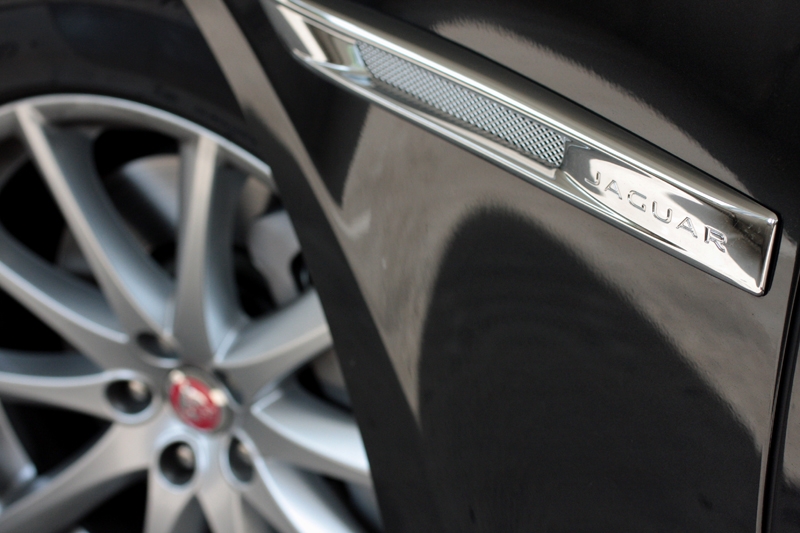Jaguar strapped in a 2.0-litre engine into their XJ — first question asked by most was, “can the car even move?”
Photos by Azfar Hashim
When Volkswagen first introduced their 1.4-litre turbo + supercharged TSI engine, skepticism were flying all over the air. People can’t believe it; the question mainly concerned around "how on earth can such a small engine move a car that weighs about 1.3 tonnes?!"

Well, I guess Volkswagen did a good engineering, marketing and PR job with that one. Praises were sung by the media, consumers were convinced and Volkswagen decided to implement the TSI + DSG combo onto every single models they could under their group. And as you can see, success rate has been good for them.

To put it simply, it was a brilliant idea — which soon took off as every other brands started to introduce force-fed engines with capacities of anywhere between 1.0-litre to 1.6-litre. And of course, consumers were waving their cheques, looking at how cars with these lumps are both powerful and economical.

And now it’s Jaguar’s turn to do the same, albeit in a slightly different twist. No, they didn’t just introduce a new family hatchback with a smallish engine — they just put in a 2.0-litre engine into their XJ. Yes you’re reading that right; Jaguar’s 7 Series/A8/S-Class contender has now gotten a modestly sized lump under its bonnet.

A little ridiculous, isn’t it?

But before you stop reading this review and begin blogging/Facebook-ing/twitter-ing/IG-ing your views, let me pause you there and tell you this: this Jaguar XJ i4 is alarmingly good.

It moves off with gusto, you can actually feel the engine working, the transmission is effectively a good worker and as a limousine, your occupants can’t even spot the difference in performance next to the bigger 3.0-litre version. You may even come to a point asking, “What sort of sorcery is this?”

Powering this 1,660 kg lux sedan (a featherweight next to the 1,955 kg A8 3.0 TFSI, 1,865 kg BMW 730Li, 1,935 kg Mercedes-Benz S400L) is the Ford-sourced 4-cylinder turbocharged 2.0-litre engine. Mated to an 8-speed automatic transmission, it whips out a rather generous 237 bhp and 340 Nm of torque, available from 2,000 rpm onwards. Jaguar claims a 7.5 seconds 0-100 km/h timing and maxes out at 241 km/h; well to be honest, the Jaguar does feel slightly faster than that…

In congested Orchard Road or CBD traffic, the XJ has more than enough power to close gaps and sprint ahead past other limos. Then along the expressway, it cruises along in a refined manner — passengers will enjoy the supple suspension set up while the driver will get to watch the world go by and smell the flower. It’s reasonably refined as well, but the only downside here is the rather slow transmission when you need to do a quick overtaking maneuver.

Thankfully though, it has a Sport mode and a pair of paddle shifters, which mean when push comes to shove and you want a slightly stiffer suspension setting at the same time (passengers won’t complaint, really), this is the mode to get the car into. Some might opine it sounds a little gruff past 4,500 rpm though…

Here’s another surprise: it handles respectably when driven enthusiastically along a series of bends. Ok, so you do feel the body movement and that excess weight in the form of that longish boot, but from the helm, you somehow have this sense that the car is compact; while at the same time the steering provides brilliant weight and response and you can actually feel the Jaaag’s safety features working together to keep things tidy. The brakes, although responsive, could still do with a little bit more weight on the pedal.

In typical Jaaag fashion, this entry-level XJ feels no way inferior to the rest of its peers. The local dealer ensured it gets proper equipment level so that buyers won’t feel ashamed of driving or showing up in the cheapest, sorry, I mean most affordable version in the range. You get good build quality — although still not as tight as a 730 Li — and as mentioned earlier, standard equipment like the glassroof/sunroof set, 19-inch alloys wrapped in Pirelli P Zero rubbers, heated steering wheel (in case Singapore gets hit by snow tomorrow), ventilated driver and front passenger seats (brilliant for our weather) and dual exhaust pipes.

Well to be predictable you can still stick to your A8, 7 Series or S-Class but if you’re money smart and know what a bargain is, this is the car you should get. Think about it — at $320k, it’s only slightly pricier than the 528i, A6 2.0T and E250, but you get the presence of a 730 Li, A8 3.0 TFSI and S400 L. And due to the fact the local dealer didn’t skive on the equipment list, no one will know the difference between this to the 3.0-litre V6 or 5.0-litre V8 variants. Hence because of that, I thereby call the (insert cockney accent) Jaaaguar XJ 2.0-litre my favourite large luxury sedan; other reasons include the still beautiful exterior, opulent interior, trusty handling and small but punchy engine…

That is until Porsche pulls the same stunt with their Panamerarara though...


